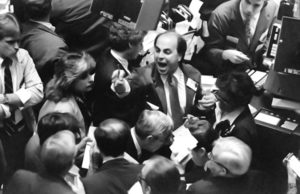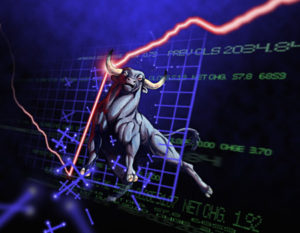
For those new to the world of investing, the stock market can appear as a daunting labyrinth of stocks and complex investment strategies. The overwhelming volume of information and choices can easily lead to a sense of bewilderment and apprehension. Amidst this intricate landscape, it becomes crucial for beginner investors to identify a simple yet effective investment strategy that can help them gain confidence and work towards their financial objectives. One such strategy that has found favour among novice investors is the Small Dogs of the Dow strategy.
The Small Dogs of the Dow strategy streamlines the investment process by zeroing in on a select group of high dividend-yielding stocks within the Dow Jones Industrial Average (DJIA). This approach enables investors to make informed decisions without getting swamped by the multitude of options in the stock market. By adopting the Small Dogs of the Dow strategy, beginner investors can leverage a tried-and-tested method that has historically shown robust performance while also enjoying a consistent income through dividends.
So, what exactly is this strategy? The Small Dogs of the Dow strategy is a well-liked investment approach that zeroes in on the ten highest dividend-yielding firms within the Dow Jones Industrial Average (DJIA). The strategy operates on the assumption that high dividend yields indicate undervalued stocks with the potential to outshine the market. Concentrating on these high-yield stocks, the strategy seeks to pinpoint companies that are currently undervalued by the market but possess strong fundamentals and the potential for future growth. Moreover, the strategy is designed to provide investors with a steady income stream through the dividends paid by these high-yield stocks.
The Small Dogs of the Dow approach is relatively straightforward and easy to comprehend, making it an appealing choice for novice investors with limited experience in the stock market. It is also a cost-effective strategy, as it does not necessitate frequent trading or the use of intricate investment vehicles. Instead, investors can invest equal amounts of money into each of the 10 Small Dogs of the Dow stocks or utilize an ETF or mutual fund that tracks the Small Dogs of the Dow index.
Despite the risks, the strategy has historically outperformed the broader market. It can be a valuable investment approach for investors seeking a simple, income-generating approach to stock market investing. However, investors should be aware of the risks associated with this approach and should always seek advice from a financial advisor before making any investment decisions.
The Small Dogs of the Dow strategy involves investing in the highest-yielding stocks within the Dow Jones Industrial Average. A variation of this strategy, known as Small Dogs of the Dow, involves investing in the highest-yielding stocks within the Dow Jones Industrial Average that have a lower market capitalization, typically under $10 billion.
To select Small Dogs of the Dow stocks, you can follow these steps: • Identify the current Small Dogs of the Dow: You can locate the current Small Dogs of the Dow list online or by using a stock screener that allows you to sort by dividend yield and market capitalization. • Investigate each company: Once you have the list of Small Dogs of the Dow, delve into each company to understand their business, financials, competitive advantages, and growth prospects. Look for companies with a history of paying dividends and a sustainable dividend payout ratio. • Assess the risks: Consider the risks associated with each company, such as industry trends, competition, regulatory environment, and financial risks. Evaluate the potential impact of these risks on the company’s financials and dividend payouts. • Diversify your portfolio: As with any investment strategy, it is crucial to diversify your portfolio to spread out your risk. Invest in a mix of Small Dogs of the Dow stocks and other types of investments to achieve a balanced portfolio. • Monitor your investments: Regularly monitor your Small Dogs of the Dow investments to ensure they meet your investment goals and risk tolerance. Reevaluate your investments periodically and make adjustments as necessary.
One of the primary advantages of this strategy is its simplicity. It is an easy-to-understand investment strategy that does not require much time or expertise. Additionally, since the strategy focuses on high-yield dividend stocks, it can provide investors with a steady income stream.
Another advantage of this strategy is its historical performance. According to some studies, the Small Dogs of the Dow have outperformed the Dow Jones Industrial Average by an average of 2% per year over the past two decades. Investors should be aware of the risks associated with this approach, such as changes in interest rates and the financial condition of the selected equities.
This strategy is also a low-cost investment approach, as it does not require frequent trading or the use of complex investment vehicles. Instead, investors can invest equal amounts of money into each of the 10 Small Dogs of the Dow stocks or use an ETF or mutual fund that tracks the Dow index.
Potential investors have expressed interest in the “small dogs of the Dow” strategy. While this approach offers advantages in simplicity and historical returns, it is important for individuals to understand both perspectives on this and alternative options. Here are a few key points regarding risks, performance, implementation and other considerations:
- Like all stock market investing, there are inherent risks to consider such as general market fluctuations, concentration in a small number of securities, reliance on dividend yields alone without regard for other factors, and changes in sector/industry returns that could impact portfolio results.
- Although backtested performance has outpaced the broader Dow Jones average, past returns do not guarantee comparable future outcomes. Markets and company fundamentals shift over time. For long-term goals, flexibility and diversification are prudent.
- Low-cost ETFs provide solid options for accessing the “small dogs” index without significant trading costs. However, individuals should understand underlying holdings, charges and fit within their preferred investment style/objectives.
- While the premise of focusing on higher-yielding, “undervalued” Dow stocks has validity, exclusivity to any single approach fails acknowledging diversity of views. Complementary allocations afford protection against unpredictable changes.
- Professional guidance enhances implementation, ongoing oversight and adaptation to evolving needs, market climates or preference changes over years/decades. Strict “set it and forget it” routines risk deviations.
Overall, the “small dogs” methodology carries value as one piece within a broader, comprehensively developed portfolio. But regular review of performance against alternatives, consideration of non-statistical priorities and openness to adjustments optimize prospects for each person according to their distinct outlooks and convictions. Does this help provide a balanced perspective on both risks and opportunities with this strategy? I’m happy to discuss any part of the overview further.
Other Articles of Interest

Black Monday – The stock market crash of 1987

Stock Market Trends

Most Hated Stock Market Bull can’t be stopped by weak economy

Nothing about 1987 stock market crash anniversary

Nickel Stocks Has Put In A long Term Bottom

BitCoin VS Precious Metals

US Dollar Finally Hit Bottom?

Bull and Bear 2019: Which one is the winner?

Buffett Indicator: Pure Nonsense

Experts Are Not Smart Enough to Spot Stock Market Crash 2017

Bear Market nonsense: Experts want you to think Markets are Going to Crash

Identifying Market Trends

Despised Bull Market Will Continue to Trend Higher

The Psychology of Contrarian Investors

Will Bitcoin Crash Chart

Rate of Inflation not an issue according to Bond Market
